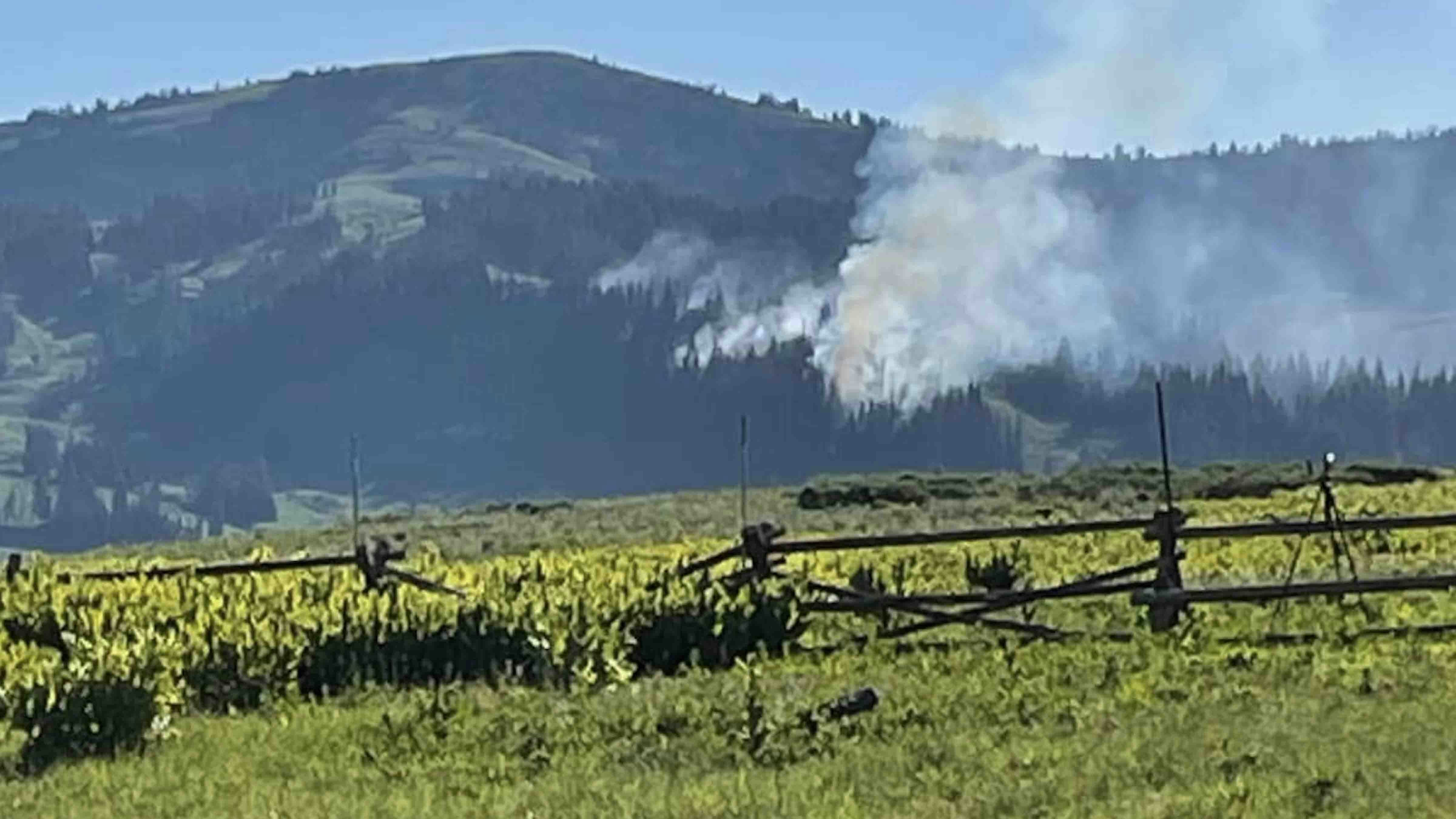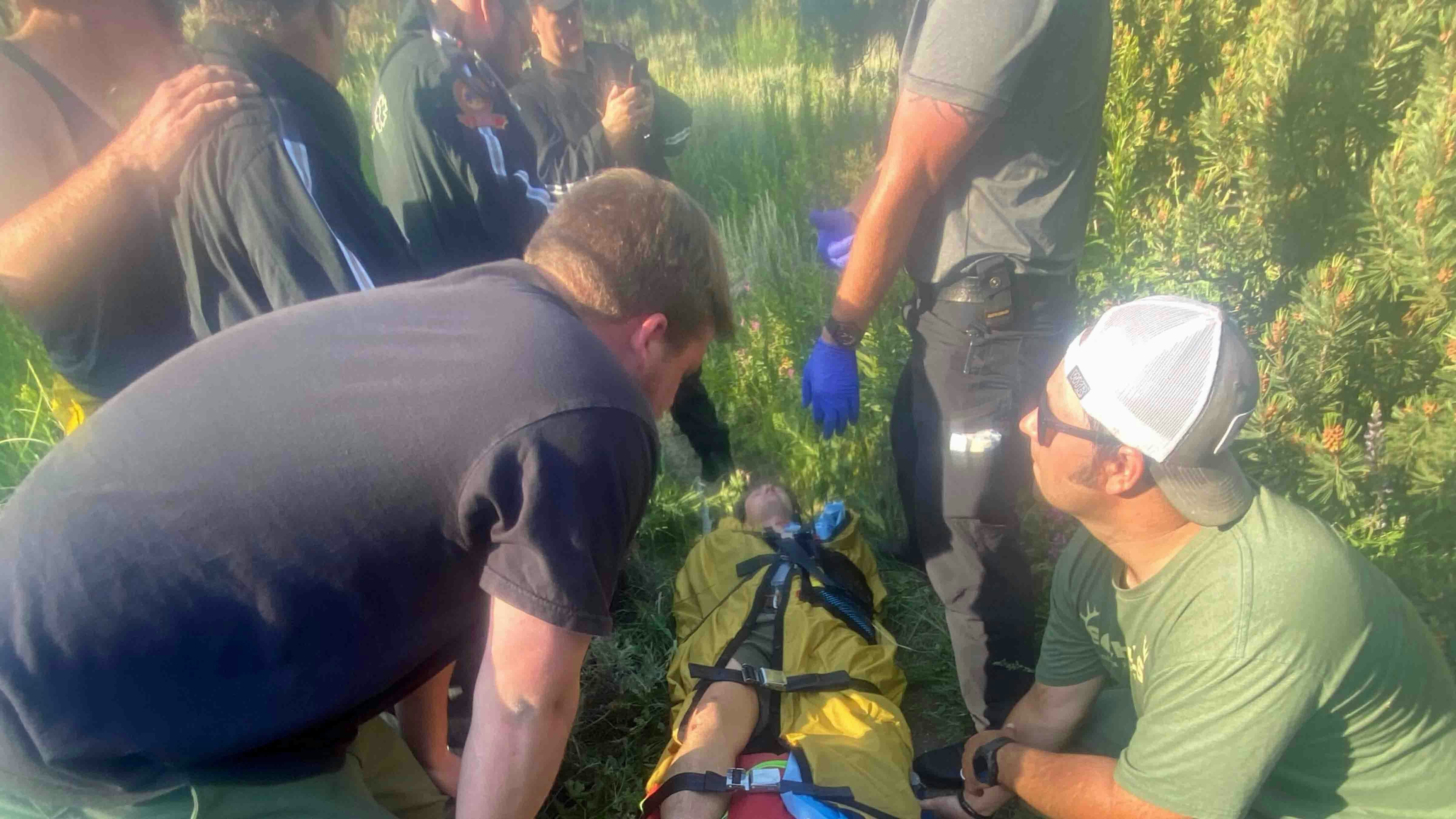Outrage over a wolf being captured, tortured and killed in Daniel has entered the realm of politics.
After numerous people testified before a Wyoming legislative committee Tuesday, it became evident that a bill in response to the incident in Daniel will be crafted and put before the Legislature in 2025.
But what form that bill might take remains to be seen.
Some who testified urged lawmakers to take a slow, measured approach. Others said the wolf’s torture and death were so horrible, and has caused so much worldwide scorn toward Wyoming, immediate action is in order.
The Legislature’s Joint Travel, Recreation, Wildlife & Cultural Resources Committee at the Wyoming Game and Fish Department’s Cody regional office got an earful Tuesday, but took no action on the matter.
‘Yote Whacking’
Some calling for immediate action said Wyoming must outlaw the pursuit of predatory animals with snowmobiles or other vehicles.
That stems from Daniel resident Cody Roberts, 42, reportedly running down a wolf with a snowmobile Feb. 29.
According to accounts of events, he captured the injured animal, duct-taped its muzzle shut and took it to his home. He then showed it off at the Green River Bar in Daniel before finally taking it out behind the bar and killing it.
Testifying to the committee over Zoom, Centennial resident Vicki Marcus said that running down coyotes and predators with snowmobiles — commonly called “yote whacking” — is all too common in Wyoming.
An attempt was made to ban the practice in 2019, but that bill died in a legislative committee, she said.
“Yote whacking has been going on for some time in Wyoming, which is horrible,” she said, adding the Legislature needs to pass a law “against this psychotic behavior.”
She said a strong response is in order, because people all over the world are still livid about the incident.
“This time, people are not going way. It won’t be hidden,” Marcus said.
Retired University of Wyoming professor Donal O’Toole called the practice “coyote mashing” and also said he thinks it’s more common than many want to admit.
Some have characterized the incident in Daniel as “tragic, but a one-off,” O’Toole said.
But he said legislators should press wildlife managers over how common the practice really is.
“I urge you to ask them, is mashing predators a thing in rural Wyoming? Because I think it is,” O’Toole said.
Gillian Marie, a Colorado resident, teacher and scientific illustrator, said photos and videos of Roberts with the wolf have gone viral, to Wyoming’s shame.
“With the magic of the Internet, these images are out there forever,” she said. “So, I think some of these children are being traumatized and will never forget those wolf eyes staring back at them through their computer, their tablet, their phone.”
Let’s Take Our Time
Others said that Wyoming lawmakers, wildlife managers, tourism boosters and ranchers should take their time in crafting reforms.
Any law against pursuing predators with vehicles must “expressly forbid purposefully running animals down,” said Bob Lanka, a retired Game and Fish official and current president of the Wildlife Society.
The specific language “purposefully” must be in any bill that’s drafted so people who accidentally hit animals on highways aren’t charged with animal cruelty, he said.
And Wyoming’s predator control policy should continue to uphold rights of ranchers to protect their livestock against wolves, he said.
Wyoming Wildlife Federation spokeswoman Jess Johnson and Wyoming Wool Growers Association Executive Director Alison Crane testified together, emphasizing a cooperative approach between interest groups.
“That means going slowly. That means having discussions over a beer or a whiskey in Wyoming,” Johnson said.
Crane said Wyoming can craft reforms to wildlife policy from within.
“This is a Wyoming issue with a very specific Wyoming solution, and that is what we all believe,” she said.
Wyoming Stock Growers Association Executive Vice President Jim Magagna said there’s no need for sweeping reforms to wolf management. Instead, the focus should be on a specific act of animal cruelty.
“This is about inappropriate treatment of a live animal,” he said.
Overall, Wolves Doing Well
Game and Fish Director Brian Nesvik said that overall, Wyoming’s wolf management has been a resounding success.
After a few rounds of wolves being delisted from endangered species protection, then relisted, they have been delisted and under Game and Fish’s management since 2017, Nesvik said.
There has been a recent push to have them relisted in the Lower 48, including Wyoming, Montana and Idaho. And advocates have said that the Daniel wolf torture incident could boost the chances of relisting.
However, based on conversations he’s had with federal officials, Nesvik said chances are slim that wolves will be placed back under federal protection in Wyoming, Montana and Idaho.
Wyoming’s wolf population has met or exceeded target numbers for recovery every year for more than 20 years, he said.
Game and Fish must maintain a total of 150 wolves, including 15 breeding pairs across Wyoming — including on the Wind River Indian Reservation and in Yellowstone and Grand Teton national parks.
As of Dec. 31, 2023, Wyoming had an estimated 352 wolves, including 24 breeding pairs in 43 packs, Nesvik said.
A breeding pair is defined as a male and female wolf that have successfully raised at least two pups by the end of each calendar year, he said.
Mark Heinz can be reached at mark@cowboystatedaily.com.





